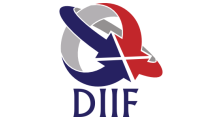Psychostimulants – a boon or bane during examinations
DOI:
https://doi.org/10.30574/gscbps.2020.13.1.0305Keywords:
Caffeine, Stimulants, Test anxiety, Medical students, Psychological distressAbstract
Psychostimulants or neuroenhancers have been used by students to increase their performance in pursuit for higher grades. Our study aimed to assess the effect of stimulants on test anxiety and psychological distress in medical students. The students were approached with self-administered questionnaire for Test Anxiety, Psychological Distress and use of stimulants during the period of examinations. The stimulants were categorized according to their average caffeine content into tea or qahwa, instant coffee and energy drinks with two other categories that is stimulant drugs use and no stimulant use. The respondents were female medical students from study year 1-5. About 84% students used stimulants, of which maximum were coffee users 64.6% followed by tea or qahwa 38.6%, energy drinks 13.86% and stimulant drugs 7.8%. The percentage of students taking stimulant drugs showed an increasing trend from year 1 (3.96%) to year 5 (11.27%) while those who did not use any type of stimulant decreased from year1 to year 5. The mean test anxiety and mean psychological distress was highest for energy drink users followed by stimulant drug users. Energy drink was positive correlated with test anxiety with statistical significance indicating the detrimental effect of high concentration of caffeine in it. Test anxiety and psychological distress was higher in students using stimulants compared those who did not. Stimulants though believed to enhance performance and alertness, may actually be disadvantageous when used in higher doses as it increases test anxiety and psychological distress which may decrease performance.
Metrics
References
Ford J, Pomykacz C. Non-Medical Use of Prescription Stimulants: A Comparison of College Students and their Same-Age Peers Who Do Not Attend College. Journal Of Psychoactive Drugs. 2016; 48(4): 253-260.
Yerkes RM, Dodson JD. The relation of strength of stimulus to rapidity of habit-formation". Journal of Comparative Neurology and Psychology. 1908; 18(5): 459–482.
Sweeney P, Levack R, Watters J, Xu Z, Yang Y. Caffeine increases food intake while reducing anxiety-related behaviors. Appetite. 2016; 101: 171-177.
Aziz N, Serafi A. Increasing levels of test anxiety and psychological distress with advancing years of medical education. British Journal of Medical And Health Research. 2017; 4(3): 40-52.
Balogun A, Balogun S, Onyencho C. Test Anxiety and Academic Performance among Undergraduates: The Moderating Role of Achievement Motivation. The Spanish Journal Of Psychology. 2017; 20.
Dr S, Jha S, Punia A, Babita B. The Relationship between Test Anxiety and Academic Performance among Undergraduate Medical Students: A Cross-sectional Study. SSRN Electronic Journal. 2019.
Tsegay L, Shumet S, Damene W, Gebreegziabhier G, Ayano G. Prevalence and determinants of test anxiety among medical students in Addis Ababa Ethiopia. BMC Medical Education. 2019; 19(1).
Ogeil RP, Phillips JG. Commonly used stimulants: Sleep problems, dependence and psychological distress. Drug and Alcohol Dependence. 2015; 153: 145–151.
Zunhammer M, Eichhammer P, Busch V. Sleep Quality during Exam Stress: The Role of Alcohol, Caffeine and Nicotine. PLoS ONE. 2014; 9(10): e109490.
Driscoll R. Westside Test Anxiety Scale Validation. 2007; 1-6.
Kessler RC, Barker PR, Colpe LJ, Epstein JF, Gfroerer JC, Hiripi E, et al. Screening for serious mental illness in the general population. Arch Gen Psychiatry. 2003; 60(2): 184-9.
Brooks RT, Beard J, Steel Z. Factor structure and interpretation of the K10. Psychological Assessment. 2006; 18(1): 62–70.
Frary C, Johnson R, Wang M. Food sources and intakes of caffeine in the diets of persons in the United States. Journal of The American Dietetic Association. 2005; 105(1): 110-113.
Nehlig A, Daval J, Debry G. Caffeine and the central nervous system: mechanisms of action, biochemical, metabolic and psychostimulant effects. Brain Research Reviews.1992; 17(2): 139-170.
Cooper M. Caffeine consumption among adults on benzodiazepine therapy: united states 1988-1994. Psychological Reports. 2004; 95(5): 183.
O’Neill C, Newsom R, Stafford J, Scott T, Archuleta S, Levis, S. et al. Adolescent caffeine consumption increases adulthood anxiety-related behavior and modifies neuroendocrine signaling. Psychoneuroendocrinology. 2016; 67: 40-50.
Gilman AG, editor, Rall TW, editor, Nies AS, editor, Taylor P, editor. (eds). In: Goodman and Gilman's The Pharmacological Bases of Therapeutics in Two Volumes. New York: McGraw-Hill. 1990; 625.
Nawrot P, Jordan S, Eastwood J, Rotstein J, Hugenholtz A, Feeley M. Effects of caffeine on human health. Food Additives and Contaminants. 2003; 20(1): 1-30.
Agriculture Research Service [Internet]. U.S. department of agriculture. 2020 [cited 20 August 2020].
Naser L, Sameh A, Muzaffar I, Omar A, Ahmed M. Comparative evaluation of caffeine content in Arabian coffee with other caffeine beverages. African Journal Of Pharmacy And Pharmacology. 2018; 12(2): 19-26.
Rahamathulla M. Prevalence, side effects and awareness about energy drinks among the female university students in Saudi Arabia. Pakistan Journal Of Medical Sciences. 2017; 33(2).
Alford C, Cox H, Wescott R. The effects of Red Bull Energy Drink on human performance and mood. Amino Acids. 2001; 21(2): 139-150.
Childs E. Influence of energy drink ingredients on mood and cognitive performance. Nutrition Reviews. 2014; 72: 48-59.
Alsunni A. Energy Drink Consumption: Beneficial and Adverse Health Effects. International Journal Of Health Sciences. 2015; 9(4): 459-465.
Arria A, Caldeira K, Kasperski S, OʼGrady K, Vincent K, Griffiths R, Wish E. Increased Alcohol Consumption, Nonmedical Prescription Drug Use, and Illicit Drug Use Are Associated With Energy Drink Consumption Among College Students. Journal of Addiction Medicine. 2010; 4(2): 74-80.
Khamis Ragab Ibrahim N, Iftikhar R, Murad M, Fida H, Abalkhaeil B, Al Ahmadi J. Energy Drinks Consumption amongst Medical Students and Interns from Three Colleges in Jeddah, Saudi Arabia. Journal Of Food And Nutrition Research. 2014; 2(4): 174-179.
Wasserman J, Fitzgerald J, Sunny M, Cole M, Suminski R, Dougherty J. Nonmedical Use of Stimulants Among Medical Students. The Journal of The American Osteopathic Association. 2014; 114(8): 643-653.
Emanuel R, Frellsen S, Kashima K, Sanguino S, Sierles F, Lazarus C. Cognitive Enhancement Drug Use Among Future Physicians: Findings from a Multi-Institutional Census of Medical Students. Journal Of General Internal Medicine. 2013; 28(8): 1028-1034.
Alrakaf F, Binyousef F, Altammami A, Alharbi A, Shadid A, Alrahili N. Illicit Stimulant Use among Medical Students in Riyadh, Saudi Arabia. Cureus. 2020.
Lucke J, Jensen C, Dunn M, Chan G, Forlini C, Kaye S, et al. Non-medical prescription stimulant use to improve academic performance among Australian university students: prevalence and correlates of use. BMC Public Health. 2018; 18(1).
Williamson S. Adverse effects of stimulant drugs in a community sample of drug users. Drug and Alcohol Dependence. 1997; 44(2-3): 87-94.
Mahoney C, Giles G, Marriott B, Judelson D, Glickman E, Geiselman P, Lieberman H. Intake of caffeine from all sources and reasons for use by college students. Clinical Nutrition. 2019; 38(2): 668-675.
Kasimay Cakir O, Ellek N, Salehin N, Hamamcı R, Keleş H, Kayalı D. et al. Protective effect of low dose caffeine on psychological stress and cognitive function. Physiology & Behavior. 2017; 168: 1-10.
Fond G, Gavaret M, Llorca P, Boyer L, Micoulaud-Franchi J, Domenech P. (Mis) use of prescribed stimulants in the medical student community: Motives and behaviors. A population-based cross-sectional study. European Neuropsychopharmacology. 2016; 26: S348-S349.
Majori S, Gazzani D, Pilati S, Paiano J, Sannino A, Ferrari S, Checchin E. Brain doping: stimulants use and misuse among a sample of Italian college students. Journal of preventive medicine and hygiene. 2017; 58(2): E130–E140.
Webb JR, Valasek MA, North CS. Prevalence of stimulant use in a sample of US medical students. Annals of clinical psychiatry: official journal of the American Academy of Clinical Psychiatrists. 2013; 25(1): 27–32.
Downloads
Published
How to Cite
Issue
Section
License

This work is licensed under a Creative Commons Attribution-NonCommercial-ShareAlike 4.0 International License.
















